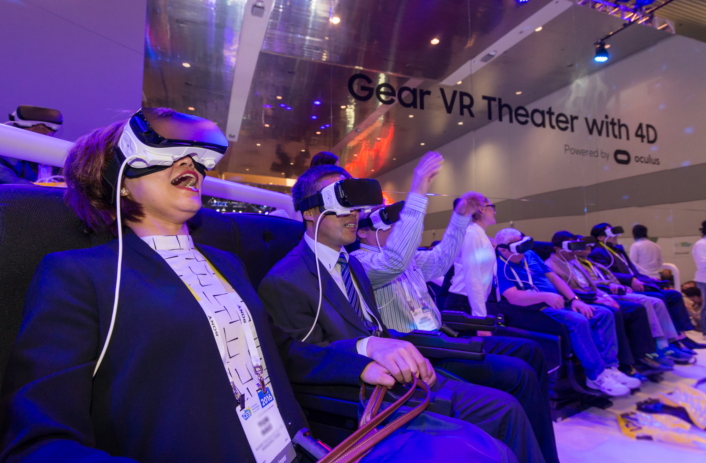Virtual Reality Event Experiences
Virtual reality event experiences bring a new dimension to events, enhancing participation and creating unforgettable memories.
From the latest advancements in technology to designing immersive environments, the possibilities are endless.
Overview of Virtual Reality Event Experiences
Virtual reality event experiences involve using VR technology to create immersive and interactive environments for participants to engage with. By putting on a VR headset, attendees can feel like they are physically present in a different location or scenario, enhancing their overall event experience.
Virtual reality technology enhances event participation by providing a more engaging and memorable experience. Attendees can interact with the environment, explore different perspectives, and even participate in activities that would not be possible in a traditional event setting. This technology adds a new dimension to events, making them more exciting and innovative.
Examples of Popular Virtual Reality Event Experiences
- Virtual concerts where attendees can feel like they are in the front row of a live performance, interacting with the stage and other concert-goers.
- Virtual trade shows and conferences where participants can explore booths, attend presentations, and network with other attendees from the comfort of their own home.
- Virtual reality gaming tournaments where players can compete in immersive environments, testing their skills and strategies against opponents from around the world.
Benefits of Virtual Reality in Event Experiences

Virtual reality offers a wide range of benefits when incorporated into event experiences. From enhancing engagement levels to creating unique and memorable moments, VR technology has the potential to revolutionize the way events are conducted.
Enhanced Engagement Levels
Virtual reality events can significantly boost engagement levels compared to traditional events. The immersive nature of VR technology captivates attendees and keeps them actively involved throughout the experience. By allowing participants to interact with the environment in a more profound way, VR events create a sense of excitement and involvement that is hard to replicate in traditional settings.
Unique and Memorable Experiences, Virtual reality event experiences
One of the key advantages of using virtual reality in event experiences is the ability to create unique and memorable moments for attendees. VR technology allows event organizers to design immersive and interactive environments that leave a lasting impression on participants. Whether it’s exploring a virtual world, engaging in interactive simulations, or experiencing a product demonstration in a new way, virtual reality events offer a level of novelty and excitement that can’t be matched by traditional events.
Designing Virtual Reality Event Experiences
Virtual reality experiences for events require careful planning and execution to ensure they are engaging and memorable for attendees. Here are key elements to consider when designing virtual reality experiences for events:
Creating Immersive Environments
When designing virtual reality experiences, it is essential to create immersive environments that transport event-goers to different worlds or scenarios. This can be achieved through high-quality graphics, realistic sounds, and interactive elements that engage multiple senses.
Interactive Features
Incorporating interactive features such as touch-sensitive controls, voice commands, or hand gestures can enhance the overall experience for attendees. This allows them to actively participate in the virtual world and feel more connected to the event.
Personalization and Customization
Virtual reality can be customized to suit different types of events, whether it’s a corporate conference, product launch, or entertainment show. By tailoring the virtual experience to match the theme and objectives of the event, attendees are more likely to be captivated and engaged.
Seamless Integration
It’s important to seamlessly integrate virtual reality into the overall event experience to ensure a smooth transition for attendees. Whether it’s setting up dedicated VR zones or incorporating VR elements throughout the event venue, the goal is to make the virtual experience accessible and easy to navigate.
Virtual Reality Hardware and Software for Events: Virtual Reality Event Experiences

Virtual reality events require specific hardware and software to create immersive experiences for attendees. From headsets to controllers, each piece plays a crucial role in delivering a seamless virtual reality experience.
Essential Hardware for Virtual Reality Events
- Headsets: VR headsets are the primary piece of hardware used in virtual reality events. They come in various models, including tethered, standalone, and mobile options.
- Controllers: Handheld controllers allow users to interact with the virtual environment, enabling them to navigate, select options, and manipulate objects within the VR space.
- Sensors: Sensors are used to track the movement of users within the virtual space, providing accurate positioning and orientation data for a more realistic experience.
- Computers or Consoles: High-performance computers or gaming consoles are essential for running VR applications smoothly and rendering high-quality graphics.
Role of Software in Virtual Reality Events
- Content Creation Tools: Software tools are used to develop virtual reality content, including 3D models, animations, and interactive elements that enhance the overall experience.
- VR Applications: Specialized VR applications are designed to run on VR headsets, delivering immersive experiences such as virtual tours, training simulations, and interactive games.
- Real-Time Rendering: Advanced software enables real-time rendering of graphics, ensuring smooth visuals and responsive interactions in the virtual environment.
Latest Advancements in Virtual Reality Technology for Events
- Wireless VR: The development of wireless VR headsets eliminates the need for cables, providing users with more freedom of movement during virtual reality experiences.
- Eye-tracking Technology: Eye-tracking technology enhances interactions by allowing users to control elements within the VR environment through eye movements, improving immersion and user engagement.
- Haptic Feedback: Haptic feedback devices simulate touch sensations, adding a sense of realism to virtual reality experiences by providing tactile feedback through vibrations or force feedback.
FAQ
How can virtual reality enhance event participation?
Virtual reality technology can provide a more immersive and engaging experience for attendees, making events more memorable.
What are some key elements to consider when designing virtual reality experiences for events?
When designing virtual reality experiences for events, it’s essential to focus on creating immersive environments, considering user interaction, and customizing the experience to suit the event type.






